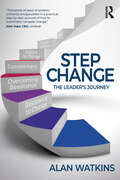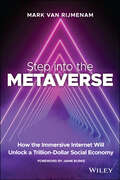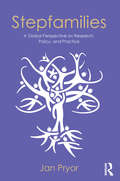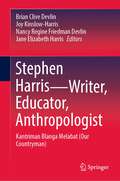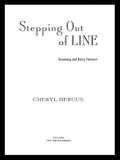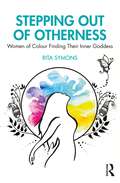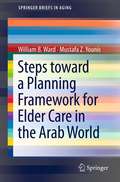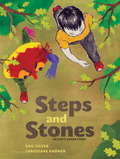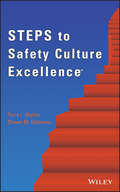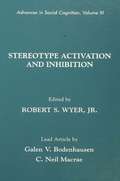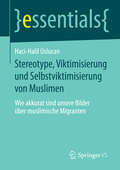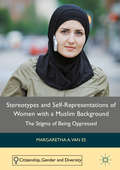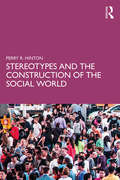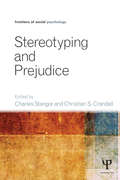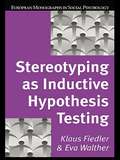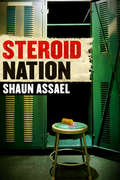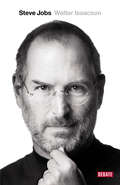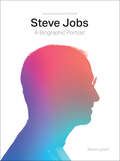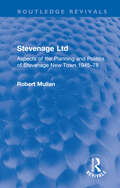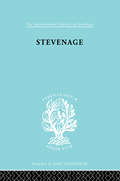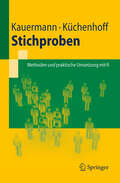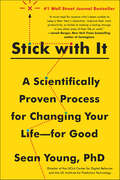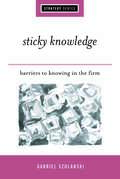- Table View
- List View
Step Change: The Leader’s Journey
by Alan WatkinsNo one likes change. Too often it’s viewed as something that must be endured; something to ‘get through’ as fast as possible so that everything can ‘return to normal'. We need to change our view of change and see it for the opportunity it really is. Step Change: The Leader’s Journey helps leaders to become gifted and skilful at moving through the change process gracefully and productively. Based on Joseph Campbell’s 'hero’s journey', Step Change: The Leader’s Journey offers a universal road map of change from step-1 (comfort zone) through to step-12 (post-delivery inspiration). The journey travels through four distinct phases of ‘discover’, ‘decide’, ‘develop’ and ‘deliver’. Step Change provides a proven formula for change, both personal and organisational, which allows us to know where we are on the Change Wheel and what to expect from each step, including what it looks and feels like at each step. By identifying what causes change to fail at each step as well as tools to navigate past the pitfalls and dead ends that leave us stuck at a particular step or retreating to the comfort zone, the change cycle can be understood and mastered. The book provides the ideal structure for senior managers, human resource managers, coaches and business leaders to follow in order to embed change across their teams and organisation.
Step into the Metaverse: How the Immersive Internet Will Unlock a Trillion-Dollar Social Economy
by Mark van RijmenamAn incisive glimpse into the future of the internet In Step into the Metaverse: How the Immersive Internet Will Unlock a Trillion-Dollar Social Economy, future tech strategist, entrepreneur, and thought leader Dr. Mark van Rijmenam delivers a startlingly insightful discussion about how the world as we know it will fundamentally change as the physical and the digital worlds merge into the metaverse, impacting the everyday experiences of people, companies, and societies. The author maps out the extraordinary opportunities and challenges facing business leaders, consumers, regulators, policymakers, and other metaverse stakeholders trying to navigate the future of the Internet. In the metaverse, you can be who you want to be, where you want to be, and companies and consumers are only restricted by their own creativity how they can benefit from the immersive internet. With engaging commentary on issues ranging from avatars, identity and digital fashion to non-fungible tokens (NFTs), blockchain and the economics of the metaverse, this book also offers: Discussions on the importance of an open and interoperable metaverse build on the web 3.0 paradigm if we want to reign in the control of Big Tech over our identity, data and lives. Explorations of the enormous—and largely untapped—potential for metaverse entertainment, including gaming, music, media, and sports and how brands can engage with their customers in novel ways and how digital twins will change how we work and innovate. Considerations related to the dangers of an always-on, immersive internet, including data breaches, avatar imposters, mental health issues, corporate and state surveillance, and the need for metaverse law. A fascinating read you won’t be able to put down, Step into the Metaverse belongs in the hands of executives, managers, and other business leaders who play a role in digital transformation or execution. It's also an invaluable resource for anyone interested in the future of technology, the internet, and social interaction.
Stepfamilies: A Global Perspective on Research, Policy, and Practice (Textbooks in Family Studies)
by Jan PryorThis new book reviews the most current global research and highlights the challenges, possibilities, and dynamics of stepfamily households. It describes their formation, their experiences, and the factors that help them thrive. International and cultural differences are highlighted throughout along with issues of class, gender, and religion. Nontraditional stepfamilies such as those headed by same-sex families are also explored along with clinical and legal issues. Engagingly written with numerous vignettes and examples, each chapter features objectives, an introduction, boldfaced key terms, summary, list of key terms, discussion questions, exercises, and additional text and web resources. The book concludes with a glossary. Highlights of coverage include: The history, diversity, and demography of stepfamilies (ch. 1). Frameworks for thinking about stepfamilies (ch. 2). The impact of race and culture on stepfamily dynamics (ch. 3). Stepfamily formation including the role of cohabitation and lone parenting (ch.4). The wellbeing of adults in stepfamilies including resident and nonresident parents (ch.5). Relationships in stepfamilies including those between adults, between adults and children, and between siblings (chs. 6 & 7). Children’s wellbeing in stepfamilies, and factors that help explain outcomes (ch. 8). The importance of intergenerational relationships (ch.9). Stepfamilies headed by sex couples; wellbeing, stigma and legal issues (ch. 10). Factors that promote wellbeing in stepfamilies such as communication patterns, rituals, and flexibility (ch.11). Interventions and therapy, and recent legal and policy issues (chs. 12 & 13). New ways of thinking about stepfamily living (ch. 14). Intended as a core advanced undergraduate/beginning graduate text for courses on stepfamilies or as a supplement for courses on divorce, family studies, introduction to the family, and/or marriage and the family taught in human development and family studies, psychology, sociology, and social work, the book also appeals to those who work with stepfamilies in a counseling or legal setting.
Stephen Harris—Writer, Educator, Anthropologist: Kantriman Blanga Melabat (Our Countryman)
by Brian Clive Devlin Nancy Regine Friedman Devlin Joy Kinslow-Harris Jane Elizabeth HarrisThis book documents the impact of Stephen Harris’s works in Aboriginal education, Aboriginal learning styles, domains of language use and bilingual-bicultural education. It provides a summary and critique of Stephen Harris's key ideas, particularly those on bilingual-bicultural education. This book also profiles the man, his background, his beliefs and talents. It showcases contributions and personal reflections from Stephen’s family, wife, close colleagues, and many of those influenced by his work. This festschrift explores the professional life and work of Stephen Harris as an educator and anthropologist who worked in the Northern Territory of Australia.
Stepping Out of Line: Becoming and Being a Feminist (Perspectives on Gender)
by Cheryl HercusWhat does it mean to be a feminist today? Why do some women become feminists and others do not? At a time when 'feminist' is a label that many young women shun, Stepping Out of Line offers an insightful account of the struggle of becoming and being a feminist. Cheryl Hercus offers a compelling new argument for why some women embrace feminism and why others do not. In doing so, she moves beyond the stereotypes of what feminism means while providing a new understanding of feminist social movements of resistance and collective action.
Stepping Out of Otherness: Women of Colour Finding Their Inner Goddess
by Rita SymonsWhat might the impact be on a grown woman of having a nursery school teacher change and anglicise her name at the age of three? That three-year-old was me. In our world, we face more and more polarisation and so it feels imperative that we understand the concept and lived experience of “Othering”. Othering takes away individuality and reduces whole groups to “they”.This book explores the theory, examining why Othering is so much part of human biology and conditioning. Through a narrative approach, the experiences of women of colour growing up in 1970s and 1980s Britain are explored, sharing individual stories and common themes. Ultimately this book is a celebration of their deep commitment to self-work and development and their success in navigating the additional burden of being different.We hear from other thinkers and activists, and offer active hope and potential ways forward in how we might create more inclusive, sustainable societies. This is a monumental task but arguably we have no choice, and so the work of changing how we choose to live feels like the most important work we can do together.
Steps Toward a Planning Framework for Elder Care in the Arab World
by Mustafa Z. Younis William B. WardThis book reviews the elder care literature pertaining to the Arab world and proposes steps that can be taken to improve the health and quality of life of older people in this region. Organized in three main sections (Program Assessment, Program Planning, Conclusions and Recommendations), the book addresses such topics as developing a conceptual framework; Arab world elder demographics; quality of life issues; demand for services; training issues; training capacity and capabilities; and conclusions and recommendations for improving the health of older persons in the Arab world. While the countries of the Arab world have the advantage of a unified language and culture that can be used to expedite development of area-wide approaches to a system of elder care, the lack of economic and political unification (such as common market and open trade) along with institutionalized age discrimination (some Arab countries restrict hiring for government and private jobs to persons younger than 45) present barriers to improving the health of older people. In addition, modernization and ease of transportation have resulted in a heavy focus on Western-style fast food, with an accompanying increase in chronic diseases such as hypertension, cardiovascular disease, diabetes, and cancer.
Steps and Stones
by Gail Silver Christiane KromerWhen Anh's friends leave and he feels left out at school, his anger shows up to keep him company. Anh the protagonist of Gail Silver's previous book Anh's Anger, is a typical and easy-to-relate-to elementary school-age boy. His anger, personified as a red hairy impulsive creature, teaches him some valuable lessons about not getting carried away by his strong emotions. By counting his steps and coordinating them with his breathing Anh is able to slow down and take his anger for a peaceful and magically transformative walk.Reach and Teach.com called Anh's Anger, "One of the best books we've ever seen on the issue of dealing with anger." The New Yorker review highlighted how the book uses "deep breathing... to regain control during a tantrum." And Zen Master Thich Nhat Hanh calls the Anh's Anger series, "a wonderful gift for both children and adults who want to learn how to turn unhappy situations into joyful ones."Steps and Stones the second of the Anh's Anger Story trilogy will help children learn to understand the causes of their own strong emotions, and teaches them peaceful ways to resolve difficulties through mindfulness and meditation. An invaluable tool for parents and teachers alike.Steps and Stones is beautifully illustrated by New York artist and children's book illustrator Christiane Krömer. Using a mix of paper, acrylic, cardboard, and found materials, her vibrant multi-textured collages reflect the connection between the characters and their environment and echo the wide range of emotions that come together in the story.Gail Silver writes: "If, at an early age, children become comfortable with identifying and articulating their anger, then they can feel confident working through anger in healthy ways during their adolescent years. There is a lot of adolescent violence in the news today. I am overwhelmed with pain and sadness every time I hear of an adolescent using a gun. While these teens are deeply troubled and have many problems, unresolved anger plays a part in their difficulty. I hope these books can be used as a preventative resource. We can only practice what we know or what we are willing to learn. My hope is that the Anh's Anger stories can contribute to a decrease in adolescent aggression and violence by teaching children at an early age how to safely understand and express their anger."
Steps to Safety Culture Excellence
by Terry L. Mathis Shawn M. GallowayProvides a clear road map to instilling a culture of safety excellence in any organizationDid you know that accidental injury is among the top ten leading causes of death in every age group? With this book as your guide, you'll learn how to help your organization develop, implement, and sustain Safety Culture Excellence, vital for the protection of and improvement in the quality of life for everyone who works there.STEPS to Safety Culture Excellence is based on the authors' firsthand experience working with international organizations in every major industry that have successfully developed and implemented ongoing cultures of safety excellence. Whether your organization is a small regional firm or a large multinational corporation, you'll find that the STEPS process enables you to instill Safety Culture Excellence within your organization.STEPS (Strategic Targets for Excellent Performance in Safety) demystifies the process of developing Safety Culture Excellence by breaking it down into small logical, internally led tasks. You'll be guided through a sequence of STEPS that makes it possible to:Create a culture of excellence that is reinforced and empowered at every levelDevelop the capability within the culture to identify, prioritize, and solve safety problems and challengesMaintain and continuously improve the performance of your organization's safety cultureAlthough this book is dedicated to safety, the tested and proven STEPS process can be used to promote excellence in any aspect of organizational performance.By optimizing the safety culture in your organization, you will give the people you work with the skills and knowledge to not only minimize the risk of an on-the-job accident, but also to lead safe, healthy lives outside of work.
Sterbehilfepolitik in Deutschland: Eine Einführung (essentials)
by Caroline PreidelCaroline Preidel befasst sich mit der Sterbehilfepolitik in Deutschland - sie gibt damit eine Einführung in ein Feld der deutschen Moralpolitik. Die Autorin definiert, welche Formen der Sterbehilfe es gibt, und beleuchtet die Konfliktdimensionen des Politikfelds. Anschließend erörtert sie, wie Deutschland und die anderen Länder Europas mit diesem moralisch aufgeladenen und komplexen Thema umgehen. Zudem wirft die Autorin einen detaillierten Blick auf die deutsche Regulierungsgeschichte und analysiert die Ursachen für die Reformbehäbigkeit Deutschlands in der Sterbehilfepolitik.
Sterben und Tod in Deutschland: Eine Soziologische Einführung In Geschichte Und Gegenwart Der Todesbewältigung
by Frank Thieme Julia JägerSterben, Tod und die Bewältigung der Trauer werden vordergründig als vom Menschen unbeeinflussbare Ereignisse bzw. als Ausdruck individuellen Verhaltens gesehen. Im Grunde sind die dabei entstandenen Richtungen und Formen aber Kultur, also gesellschaftlich bedingt. Das gilt für die Auseinandersetzung mit dem Sinn des Sterbens, für die Ursachen und Orte des Todes, für die Formen der Trauerbewältigung, die Vielfalt der Bestattungsarten und Gedenkrituale. Geblieben ist dem Tod die Ambivalenz. So gelang es in modernen Gesellschaften ihn erfolgreich zu bekämpfen, d.h. hinauszuschieben. Andererseits gibt es noch immer die absichtsvolle, politisch legitimierte Tötung.
Stereotype Activation and Inhibition: Advances in Social Cognition, Volume XI (Advances in Social Cognition Series #Vol. 11)
by Robert S. WyerThe use of social sterotypes as a basis for judgments and behavioral decisions has been a major focus of social psychological theory and research since the field began. Although motivational and cognitive influences on stereotyping have been considered, these two general types of influence have rarely been conceptually integrated within a common theoretical framework. Nevertheless, almost every area of theoretical and empirical concern in social cognition--areas such as the interpretation of new information, memory and retrieval processes, impression formation, the use of heuristic vs. analytic processing strategies, the role of affect in information processing, and self-esteem maintenance--has implications for this important social phenomenon. This volume's target article brings together the research of Galen Bodenhausen, Neil Macrae, and others within a theoretical framework that accounts for the processes that underlie both the activation of stereotypes and attempts to suppress their influence. They consider several stages of processing, including: *the categorization of a stimulus person; *the influence of this categorization on the interpretation of information about the stimulus person; and *the social judgments and behavioral decisions that are ultimately made. The stereotype activation and suppression mechanisms that the target article authors consider operate at all of these stages. Their conceptualization provides a framework within which the interrelatedness of processing at these stages can be understood. The 11th in the series, this volume includes companion articles that help to refine and extend the target article's conceptualization and make important theoretical contributions in their own right. They are written by prominent researchers in cognitive and social psychology, many of whom are active contributors to research and theory on stereotyping. They address the following topics: * the role of power and control in stereotype-based information processing; * the influence of prejudice; * self-regulatory processes; * social categorization; * the correction processes that result from perceptions of bias; and * the conceptualization of stereotypes themselves.
Stereotype, Viktimisierung und Selbstviktimisierung von Muslimen: Wie akkurat sind unsere Bilder über muslimische Migranten (essentials)
by Haci-Halil UslucanDer Diskurs über Zuwanderer in Deutschland ist häufig verzerrt; Selbst- und Fremdwahrnehmungen klaffen hier meistens weit auseinander. So, wie sie gesehen werden, sehen sie sich selbst nicht; und die einheimische Bevölkerung sieht vieles nicht, was den Zuwanderern wiederum für ihr Selbstbild essenziell ist. Deutlicher wird diese Diskrepanz, wenn es sich dabei um muslimische Zuwanderer handelt. Das bleibt nicht ohne Folgen für ihre gesellschaftliche Integration und ihre Teilhabechancen. Der Beitrag analysiert zum einen, was die Quellen der verzerrten Bilder sind, stellt dann die Frage etwas allgemeiner und arbeitet die psychologischen Mechanismen der Vorurteilsgenese, der Funktion und Folgen von sozialer Diskriminierungen und Vorurteilen heraus. Abschließend wird darauf eingegangen, welche politischen und pädagogischen Maßnahmen sinnvoll sind, diese Diskriminierungen abzubauen und welche Aufgaben hier jeweils sowohl den Institutionen als auch den beteiligten Gruppen zukommen.
Stereotypes and Self-Representations of Women with a Muslim Background: The Stigma of Being Oppressed (Citizenship, Gender and Diversity)
by Margaretha A. van EsThis book explores how stereotypes of “oppressed Muslim women” feed into the self-representations of women with a Muslim background. The focus is on women active in, and speaking on behalf of, a wide variety of minority self-organisations in the Netherlands and Norway between 1975 and 2010. The author reveals how these women have internalised and appropriated particular stereotypes, and also developed counter-stereotypes about majority Dutch or Norwegian women. She demonstrates, above all, how they have tried time and again to change popular perceptions by providing alternative images of themselves and of Islam, paying particular attention to their attempts to gain access to media debates. Her central argument is that their efforts to undermine stereotypes can be understood as an assertion of belonging in Dutch and Norwegian society and, in the case of women committed to Islam, as a demand for their religion to be accepted. This innovative work provides a “history from below” that makes a valuable contribution to scholarly debates about citizenship as a practice of inclusion and exclusion. Providing new insights into the dynamics between stereotyping and self-representation, it will appeal to scholars of gender, religion, media, and cultural diversity.
Stereotypes and the Construction of the Social World
by Perry HintonStereotypes and the Construction of the Social World explores the complexity of stereotypes, guiding the reader through issues of definition and theoretical explanations from psychology and other disciplines. The book examines why people use stereotypes, which have often been represented as inaccurate, rigid and discriminatory. If that is what they are, then why would people employ such ‘faulty’ or ‘biased’ views of others? <p> Whilst this book presents a detailed and comprehensive analysis of the psychological research into the individual use of stereotypes, it also presents this research within its ideological and historical context, revealing the important sociocultural factors in what we mean by ‘stereotypes’. From the politics of representation and inter-group power relations, alongside individual social cognitive issues, the book provides a comprehensive and cross-disciplinary account of stereotypes and stereotyping.
Stereotyping and Prejudice: Key Readings (Frontiers of Social Psychology)
by Charles Stangor Christian S. CrandallThis volume presents a contemporary and comprehensive overview of the great diversity of theoretical interests, new ideas, and practical applications that characterize social psychological approaches to stereotyping and prejudice. All the contributions are written by renowned scholars in the field, with some chapters focusing on fundamental principles, including research questions about the brain structures that help us categorize and judge others, the role of evolution in prejudice, and how prejudice relates to language, communication, and social norms. Several chapters review a new dimension that has frequently been understudied—the role of the social context in creating stereotypes and prejudice. Another set of chapters focuses on applications, particularly how stereotypes and prejudice really matter in everyday life. These chapters include studies of their impact on academic performance, their role in small group processes, and their influence on everyday social interactions. The volume provides an essential resource for students, instructors, and researchers in social and personality psychology, and is also an invaluable reference for academics and professionals in related fields who have an interest in the origins and effects of stereotyping and prejudice.
Stereotyping as Inductive Hypothesis Testing (European Monographs in Social Psychology)
by Klaus Fiedler Eva WaltherTraditional social hypotheses have a built-in tendency to verify themselves and so involuntarily resist attempts at stereotype change or correction. This is the insight demonstrated and discussed as the start point for an alternative approach to the problem of stereotyping and hypothesis testing. Stereotyping as Inductive Hypothesis Testing explicates the proposition that many stereotypes originate not so much in individual brains, but in the stimulus environment that interacts with and constitutes the social individual. This cognitive-ecological approach is then used to analyse the different aspects of language, sign systems and communication that can implicitly govern hypothesis testing procedures and lead to circular or reinforcing outcomes. The authors describe factors in tests such as judgment, memory and expectation and go on to suggest viable ecological learning approaches to them. An original research project based on a classroom situation is used to demonstrate and verify findings. The cognitive-ecological approach is then contextualised in relation to both the traditional approaches it can replace and the contemporary statistical sampling practices it can improve. Written with a profound understanding of the link between theoretical rigour and good empirical research practice this monograph will be invaluable to anyone with an interest in stereotyping or who wishes to enhance the reliability and self-awareness of their research methods.
Steroid Nation: : Juiced Home Run Totals, Anti-aging Miracles, and a Hercules in Every High School: The Secret History of America's True Drug Addiction
by Shaun AssaelThey are the drugs that make millionaires, and cause careers to crash. They lurk at the cross-section of science and scandal, and the list of stars who've been laid high and low by them grows every day. In Steroid Nation, Shaun Assael traces the history of America's steroid-mania, and demonstrates why it is still such a stubborn, enduring phenomenon. Beginning his epic story in 1981 with Dan Duchaine, the godfather of America's steroid movement, Assael follows the drug as it journeys from the Venice Beach gyms christened by Arnold Schwarzenegger to NFL locker rooms to the world of MLB, which found itself paralyzed in the 2000s by a parade of perp walks and hand-wringing headlines. From Barry Bonds to Marion Jones, Lance Armstrong to A-Rod, Steroid Nation tells the story of wildly ambitious athletes who felt they couldn't compete without a chemical edge. Part detective story, part medical investigation, and part sociological examination, Steroid Nation is a groundbreaking work on the most compelling story in the sports world today.
Steve Jobs
by Walter IsaacsonLa biografía definitiva de Steve Jobs, el fundador de Apple, escrita con su colaboración. La muerte de Steve Jobs ha conmocionado al mundo. Tras entrevistarlo en más de cuarenta ocasiones en los últimos dos años, además de a un centenar de personas de su entorno, familiares, amigos, adversarios y colegas, Walter Isaacson nos presenta la única biografía escrita con la colaboración de Jobs, el retrato definitivo de uno de los iconos indiscutibles de nuestro tiempo, la crónica de la agitada vida y abrasiva personalidad del genio cuya creatividad, energía y afán de perfeccionismo revolucionaron seis industrias: la informática, el cine de animación, la música, la telefonía, las tabletas y la edición digital. Consciente de que la mejor manera de crear valor en el siglo XXI es conectar la creatividad con la tecnología, Jobs fundó una empresa en la que impresionantes saltos de la imaginación van de la mano de asombrosos logros tecnológicos. Aunque Jobs colaboró en el libro, no pidió ningún control sobre el contenido, ni siquiera ejerció el derecho a leerlo antes de su publicación. No rehuyó ningún tema y animó a la gente que conocía a hablar con franqueza. «He hecho muchas cosas de las que no me siento orgulloso, como dejar a mi novia embarazada a los veintitrés años y cómo me comporté entonces, pero no hay ningún cadáver en mi armario que no pueda salir a la luz». Jobs habla con una sinceridad a veces brutal sobre la gente con la que ha trabajado y contra la que ha competido. De igual modo, sus amigos, rivales y colegas ofrecen una visión sin edulcorar de las pasiones, los demonios, el perfeccionismo, los deseos, el talento, los trucos y la obsesión por controlarlo todo que modelaron su visión empresarial y los innovadores productos que logró crear. Su historia, por tanto, está llena de enseñanzas sobre innovación, carácter, liderazgo y valores. La vida de un genio capaz de enfurecer y seducir a partes iguales. Reseña:«El fallecimiento de Steve Jobs ha precipitado un alud de libros sobre su figura. De todos ellos, la aproximación más completa e interesante al personaje es la de Isaacson.»La Vanguardia
Steve Jobs: A Biographic Portrait
by Kevin LynchThis is a stunning visual guide to the life and works of entrepreneur Steve Jobs. Easily one of the most influential innovators of the twenty-first century, Steve Jobs has fundamentally shaped the way in which we communicate and, even more broadly, live our lives. In this information-packed graphic biography, Steve Jobs&’ remarkable talent and genius are explored through bold design and original graphics. Kevin Lynch explores Jobs' journey from savvy salesman, to his rivalry and market competition with Bill Gates, and his shift towards radical innovations in later life. This technological innovator led a fascinating, astounding and ultimately too short life, that irreversibly impacted how we communicate. Steve Jobs is a visual celebration and comprehensive study of &‘The Maverick&’ and his work; and a must-have for any fan of Apple products.
Stevenage Ltd: Aspects of the Planning and Politics of Stevenage New Town 1945-78 (Routledge Revivals)
by Robert MullanA study of particular aspects of the politics of planning a new town, this book, originally published in 1980, covers events from the inception of Stevenage in 1946 up to 1978. As a case study, the focus is on two expansion schemes, which were intended to extend the designated area of the town, and on the public protest that the two schemes engendered. Emphasis is placed on the structure and action of three groups of people: the ‘urban managers’ – the Stevenage Development Corporation; Stevenage industrialists; and local organisations engaged in protest. The theoretical focus is on the thesis of ‘urban managerialism’: the book examines the constraints placed upon both the structure and action of the Stevenage urban managers over the previous thirty years. In showing how matters work in practice, it directs light on issues of theory which other sociologists of planning, such as Pickvance and Castells, had only discussed in the abstract. The author argues that the experience of Stevenage illustrates a case of urban policy (particularly in housing and employment) being determined by the interests of industry alone, while at the same time pointing to the interrelationship of Stevenage industry and the town’s Development Corporation. He examines the membership, strategies and aims of the various protest groups involved over the years, and casts considerable doubt on the notion that the groups were ‘for democracy’ and ‘against bureaucracy’. Finally, he concludes, controversially, that in Stevenage’s case, public participation and protest were basically irrelevant to the decision-making processes.
Stevenage: A Sociological Study of a New Town (International Library of Sociology)
by Harold OrlansFirst published in 1998. Routledge is an imprint of Taylor & Francis, an informa company.
Stichproben
by Göran Kauermann Helmut KüchenhoffDas Buch führt in Grundprinzipien der Stichprobenziehung und der zugehörigen statistischen Auswertung ein. Dabei stehen Motivation und anschauliche Beschreibung der Verfahren im Vordergrund. Nach einer generellen Einführung werden sowohl modellbasierte als auch designbasierte Stichprobenverfahren wie Clusterstichprobe und geschichtete Stichprobe entwickelt. Jedes Kapitel wird mit der Umsetzung der Verfahren mit dem Programpaket R abgeschlossen. Hierdurch werden die Leserin und der Leser in die Lage versetzt, selbst komplexe Stichprobenverfahren direkt in R umzusetzen. Ein Ausblick auf weitere Verfahren und praktische Probleme schließt jedes Kapitel des Buches ab.
Stick with It: A Scientifically Proven Process for Changing Your Life—for Good
by Sean D. Young#1 Wall Street Journal BestsellerAn award-winning psychologist and director of the UCLA Center for Digital Behavior shows everyone how to make real, lasting change in their lives in this exciting work of popular psychology that goes beyond The Power of Habit with science and practical strategies that can alter their problem behaviors—forever.Whether it’s absent-minded mistakes at work, a weakness for junk food, a smart phone addiction, or a lack of exercise, everyone has some bad habit or behavior that they’d like to change. But wanting to change and actually doing it—and sticking with it—are two very different things.Dr. Sean Young, an authoritative new voice in the field of behavioral science, knows a great deal about our habits—how we make them and how we can break them. Stick with It is his fascinating look at the science of behavior, filled with crucial knowledge and practical advice to help everyone successfully alter their actions and improve their lives.As Dr. Young explains, you don’t change behavior by changing the person, you do it by changing the process. Drawing on his own scientific research and that of other leading experts in the field, he explains why change can be difficult and identifies the crucial forces that combine to make transformation permanent, from the right way to create new habits to how to harness emotional meaning to motivate change. He also helps us understand how the mind often interferes with creating lasting change and how we can outsmart it, including using "neurohacks" to shortcut the brain’s counterproductive instincts. In addition he provides a powerful corrective to the decades old science of habits, offering a next generation discussion of how habits can change behavior with the right approach.Packed with pragmatic exercises and stories of real people who have used them successfully, Stick with It shows that it is possible to control spending, stick to a diet, become more social, exercise regularly, stop compulsively checking e-mail, and overcome problem behaviors—forever.
Sticky Knowledge: Barriers to Knowing in the Firm (SAGE Strategy series)
by Professor Gabriel SzulanskiWhy don't best practices spread within firms? What exactly is sticky knowledge? Having recognized that knowledge assets are rapidly becoming their most precious source of competitive advantage, a large number of organizations are now attempting to transfer best practices. Yet best practices still remain stubbornly immobile. Sticky Knowledge reveals that the transfer of practices is a complex phenomenon, and demonstrates the range of barriers to transferring best practices within the firm. Written in a brief and accessible format, Gabriel Szulanski defines the popular concept of stickiness and its operationalization, providing a roadmap for understanding and further researching this topical issue. Taking a fresh look at accepted wisdom, and presenting research findings that conflict with some established views, the book will be essential reading for academics and students addressing issues related to knowledge and the firm. Practising managers and MBA students will also find it of immense value.
